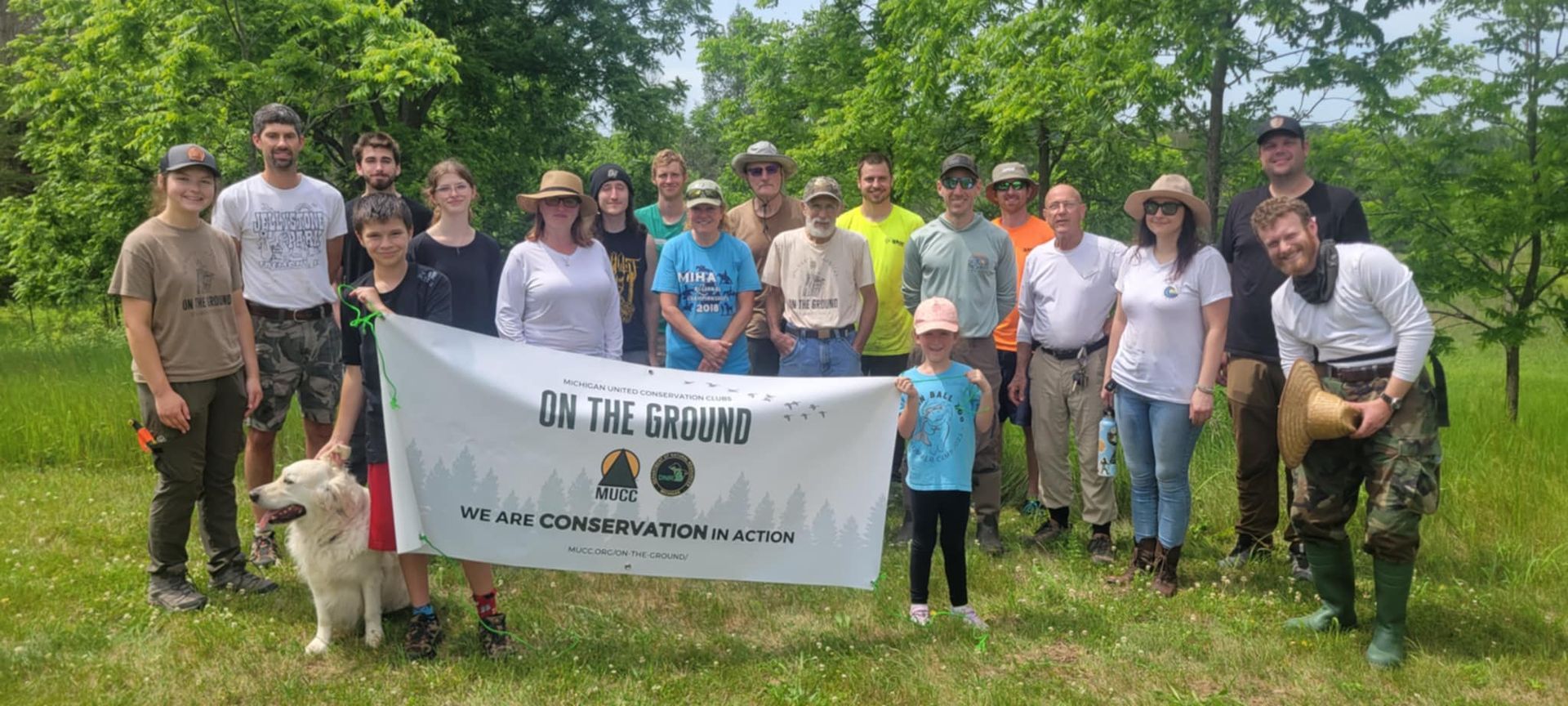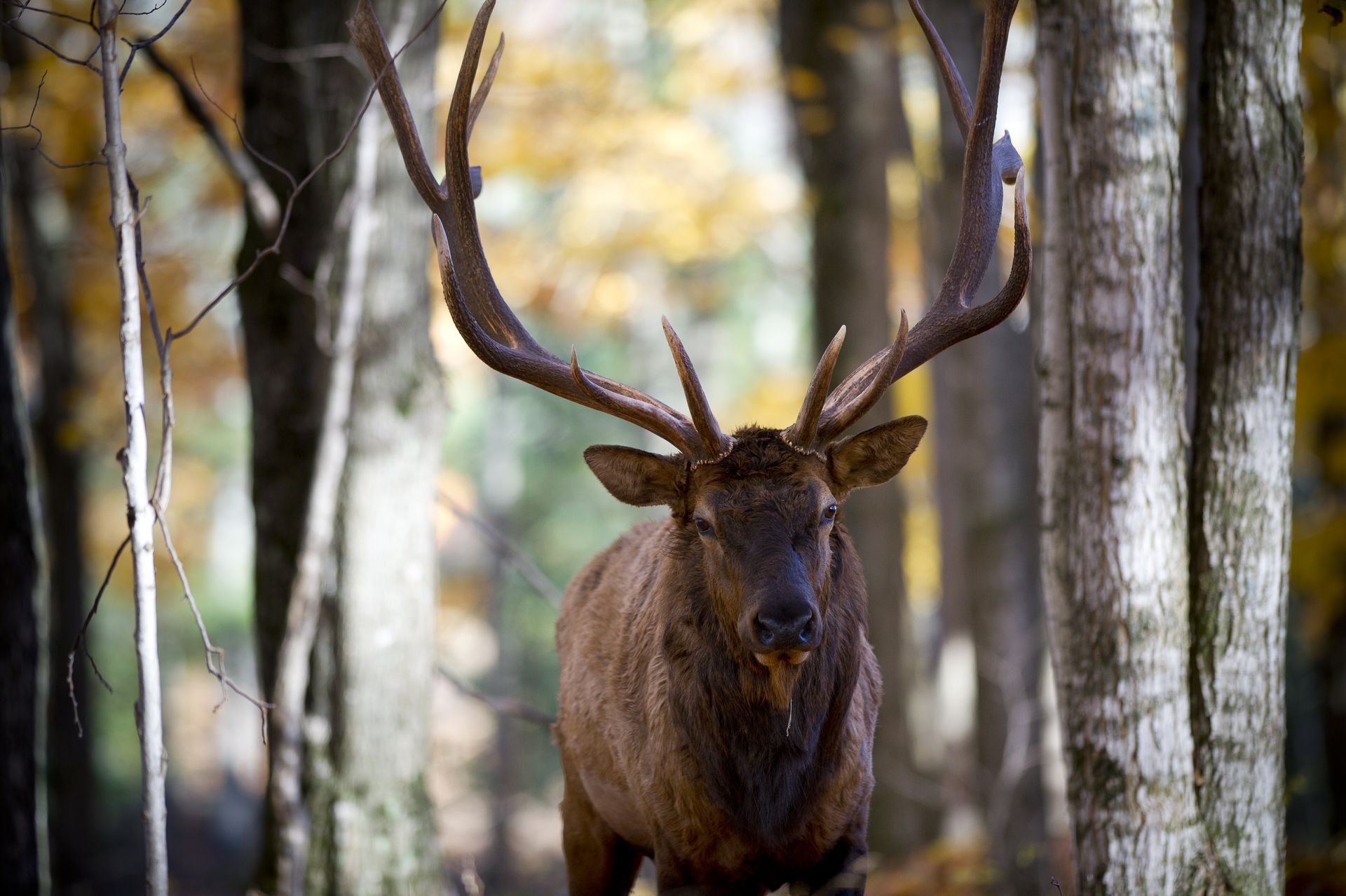Having a Hard Time Identifying Woody Invasives in the Winter? On the Ground has your Back
As the leaves begin to fall and winter approaches, the need to remove woody invasives continues. Removing woody invasives during the wintertime is ideal as the species becomes dormant and easy to get access. The big issue then becomes how you can distinguish a woody invasive from a native plant when it’s just the bark. Below we have listed out the common species we at MUCC have worked to remove from our public land and helpful indicators to look out for when in the field during winter.
Autumn Olive
The bark on a young autumn olive tree is a lighter shade of brown with small speckles on the branches. As the plant matures, the color of the bark turns to a light gray or grayish-brown color. You’ll notice that the bark on mature autumn olive trees is more fibrous and that it peels off in long, narrow strips. The winter buds of autumn olive form a “whorled” pattern. Whorled means to surround or wrap around the stem or stalk. The branches have thorns; younger branches have longer thorns.
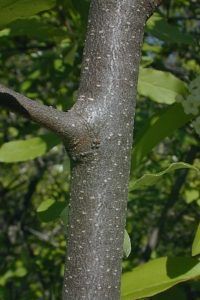
Young Autumn Olive bark. Photo by John Hilty
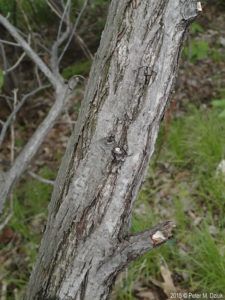
Mature Autumn Olive bark. Photo by Peter Dziuk
Common Buckthorn
A young buckthorn tree has gray-brown bark with eye-shaped pores. As the tree matures, the bark becomes flaky and the color darkens to a gray-black. One of the most distinguishable features of common buckthorn is its twigs. They have a pointed “spine” on the tip. The buds tend to grow in an opposite pattern but on occasion will grow in an alternate pattern.
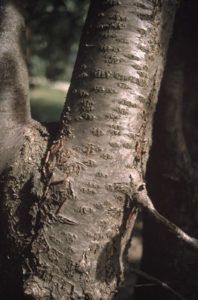
Young Common Buckthorn bark.
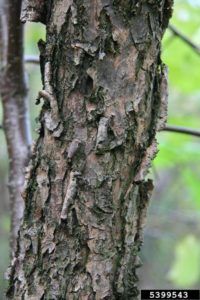
Mature Common Buckthorn bark. Photo by Leslie J. Mehrhoff
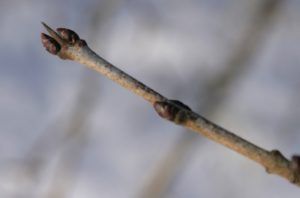
Thorn on the end of a Common Buckthorn branch. Photo by Sten Porse
Black Locust
Young black locusts have smooth brown/green bark but will start to develop furrows. Mature bark is a dark gray-brown and is deeply fissured. One of the best indicators of black locusts is the aggressive thorns protruding at twig nodes. It is easier to ID using the seed pods that persist through the winter. Pods are smooth, dark brown, flat, and contain 4-8 flat, brown seed.
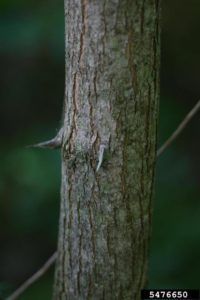
Young Black Locust bark. Photo by Chris Evans
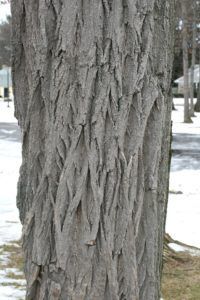
Mature Black Locust bark. Photo by Arieh Tal
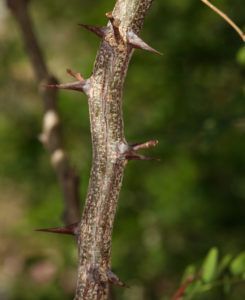
Black Locust thorns. Photo by S. Matson
While there are many other invasives to look out for we hope this is a good baseline on what to look out for. If you get an itch to help improve Michigan’s public land why not volunteer with On the Ground?! If you’re interested in volunteering, please visit https://mucc.org/on-the-ground/
Recent Posts

